PROTECT YOUR DNA WITH QUANTUM TECHNOLOGY
Orgo-Life the new way to the future Advertising by AdpathwaySome winters I cover my beds, and others I leave them be. The change depends on what’s growing in the beds and how cold the winter gets. In some years, no covering is necessary! In other years, extra protection keeps the beds safe from frosts and freezes.
Not only are our climates different across the U.S., but our crops are, too. Certain crops prefer growing without a cover during the fall and winter. Garlic, for example, needs cold temperatures in the off-season to grow properly in spring and summer.
Other crops, like lettuce and root vegetables, benefit from frost protection. A cover will extend the growing season, allowing you to grow tender crops well into the cold months.
So, the question remains: Should you cover when you prepare garden beds for winter?
3-Minute Raised Bed
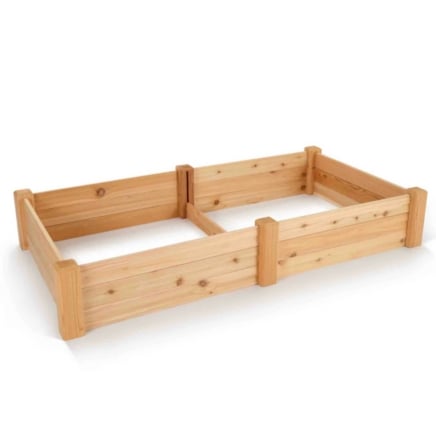
3-Minute Raised Bed and Extension Kit
Small Cedar Raised Bed

Large Cedar Raised Bed
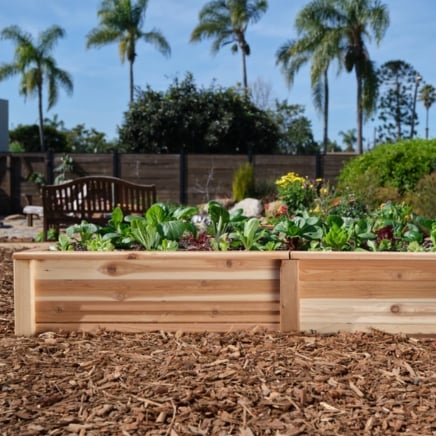
To Cover or Not to Cover?
Yes, most growers should cover their beds, and all gardeners should prepare them for winter. This is especially true if you have crops from the fall and summer still growing, or if you recently planted seeds of winter-hardy vegetables. A frost cover will encourage seedlings to grow, and it’ll keep mature specimens safe from freezes, ice, and snow.
Coverings conserve heat and moisture in the garden beds they blanket. If you garden in a frost-free climate, you may not need to use one. Additionally, coverings may be unnecessary if you are growing frost-loving plants like fava beans or garlic.
How to Prepare Garden Beds for Winter
To cover or not to cover, that is the question! The answer depends on what you’re growing and how cold your garden gets.
Look to your beds and take stock of what’s inside them. Are there some carrots and beets still swelling? Or, are your beds clean and full of garlic cloves under the soil? No matter the case, we’ll discuss how to prepare garden beds for winter.
Consider the Climate
 Frost cloth keeps beds warmer when nights turn cold.
Frost cloth keeps beds warmer when nights turn cold.Gardens in cold climates stay frigid during the winter. Many regions of the northern U.S. are subject to hard freezes and frosts as fall gives way to the chilly season. It becomes impossible to grow crops as the ground freezes over.
Instead of letting your garden beds freeze, cover them with a protective layer. Use a material that traps heat, like frost cloth (row cover). To use a frost cloth, simply drape it over your beds and weigh down its edges. Ensure each end touches the ground, and leave no gaps for heat to escape.
Or, consider converting your garden beds into hoophouses. Install metal U-posts into the soil, then cover the hoops with UV-resistant greenhouse plastic. Secure the flaps to the beds, and open them daily to let air flow through.
Protect Frost-Tender Plants
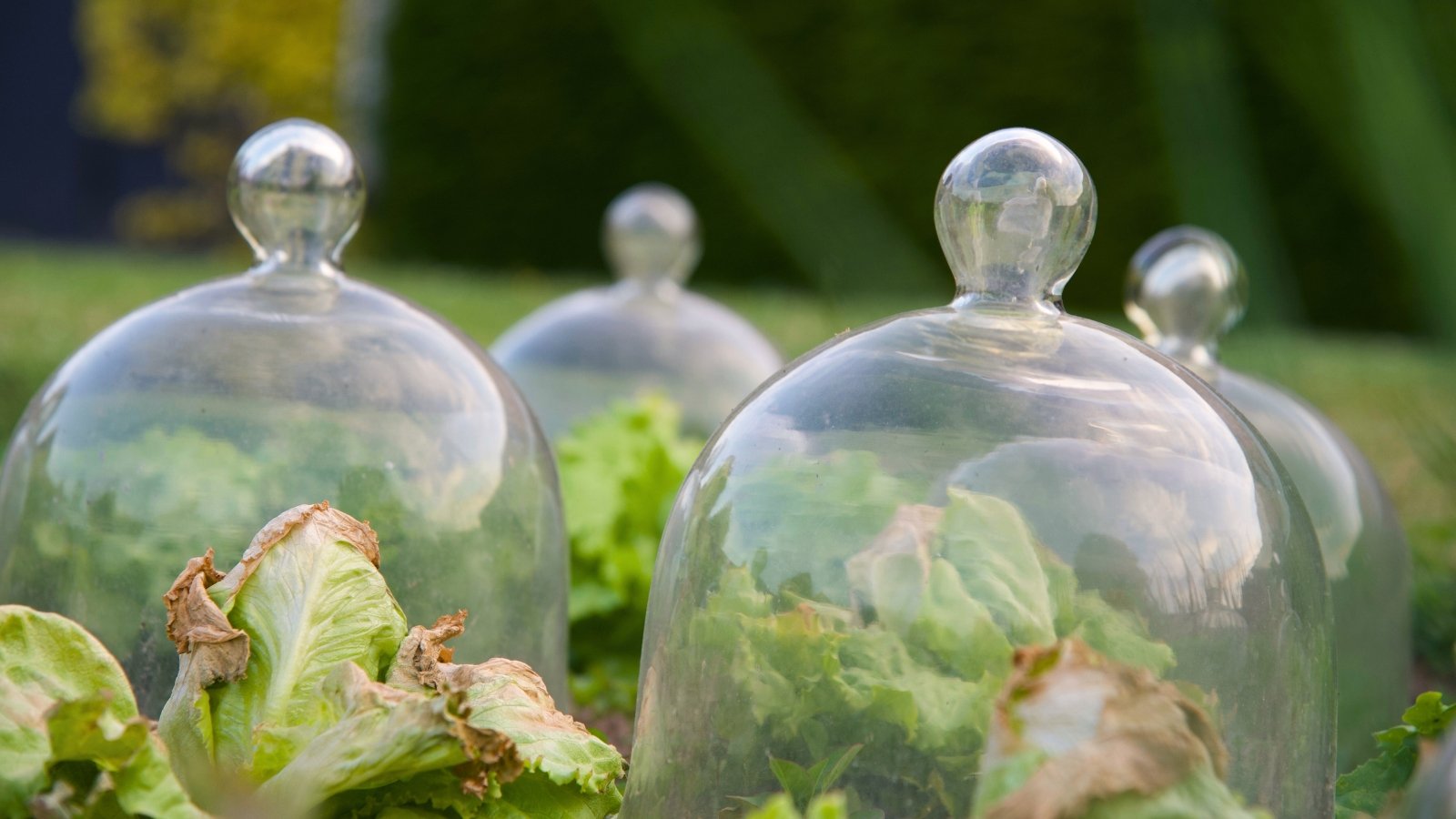 Tender seedlings thrive longer beneath a simple cloche.
Tender seedlings thrive longer beneath a simple cloche.You’ll definitely want to prepare frost-tender vegetables and perennials for the winter. Covering them will allow them to finish growing before it’s too late. Without a cover, these tender plants will turn mushy and rotten when frosts arrive.
Perhaps you have green tomatoes still on the vines, or your turnips aren’t quite ready for picking. Or, there are spinach, kale, and bok choi seedlings that haven’t reached maturity yet. Regardless of the crops you’re cultivating, it’s best to think about preparing them for the cold months before fall’s first frost arrives.
If you have a plant or two that needs protection, consider using cloches. These bell-jar-shaped coverings are big enough to fit around a few seedlings or a single mature vegetable. They insulate and protect the plants underneath from cold weather, and they trap heat that radiates from the soil.
Insulate New Beds
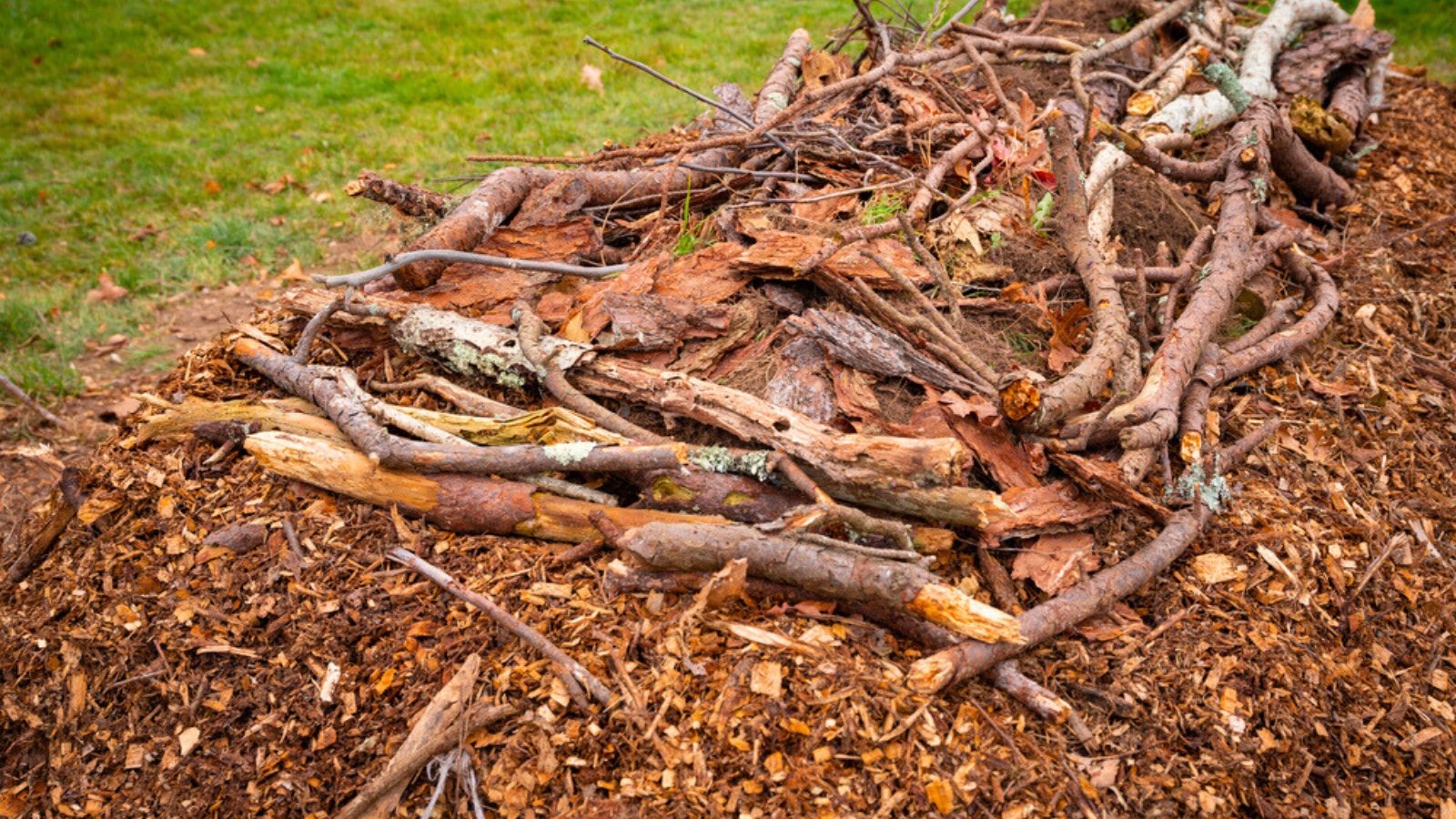 Decaying wood at the base enriches future growth.
Decaying wood at the base enriches future growth.When setting up a new garden bed, you’ll need plenty of soil to fill it with. Soil quickly grows expensive when you have to buy tons of it. Instead of spending more than you’d like, use ingenious techniques like hugelkultur to fill them instead.
Simply layer the bottoms of the beds with cardboard or paper bags to kill the plants underneath. Then, fill the beds with plant clippings, decaying wood, straw, and dead crops. Alternate each debris layer with one of soil or compost, and finish the bed with a final layer of compost on top.
The debris will decompose into rich organic material that benefits your future plantings. To help facilitate this breakdown, cover the beds when you’re done filling them. Microbes, worms, and beneficial organisms turn large waste particles into smaller ones; the covering helps them survive by keeping them warm amidst cold winter weather.
Protect Grass Seedlings
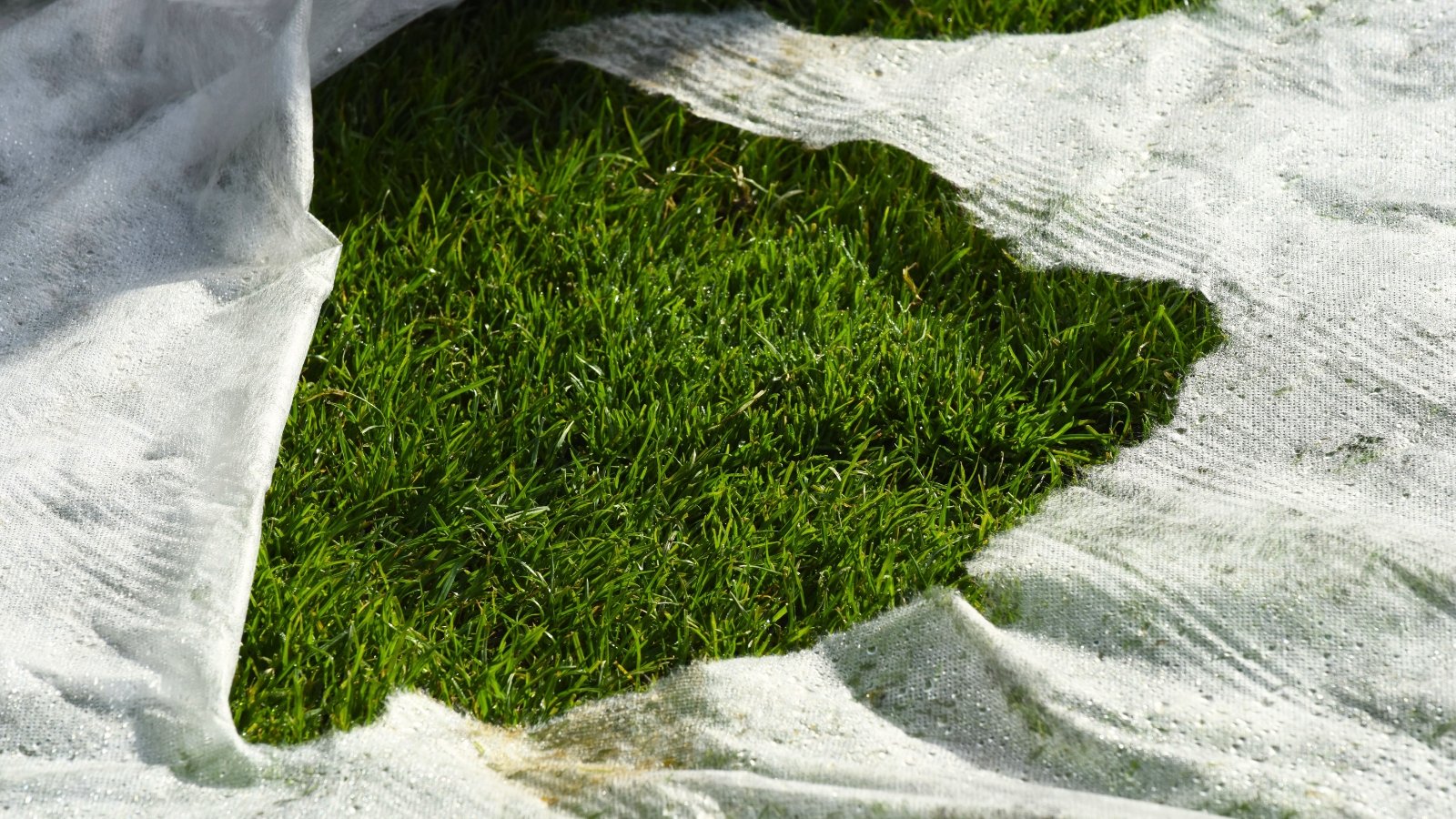 Watch forecasts closely to know when covers help.
Watch forecasts closely to know when covers help.New lawns need protection, too! Grass seedlings are sensitive to hard freezes, no matter if they’re warm-season or cold-season cultivars. Protect them now for a green, perky lawn in the spring.
You don’t need to prepare the lawn if you planted seeds two or more months before the first frost date. The grasses will enter dormancy and need little protection with an early planting date. If you cover them when they’re dormant, you may encourage new growth too early in the winter.
To prepare the lawn, blanket it with frost cloth on cold nights. Watch the weather forecast to know when to cover and uncover the beds. Use a frame or posts to support the cloth so it doesn’t lean on the young seedlings while they’re sprouting.
If the day is warm and sunny, remove the cloth to let the lawn have some fresh air. Frost cloths and row covers allow some air and light to pass through, but it’s a good idea to open them up on hot days. It’ll prevent excessive heat from reaching the site.
Don’t Forget Containers!
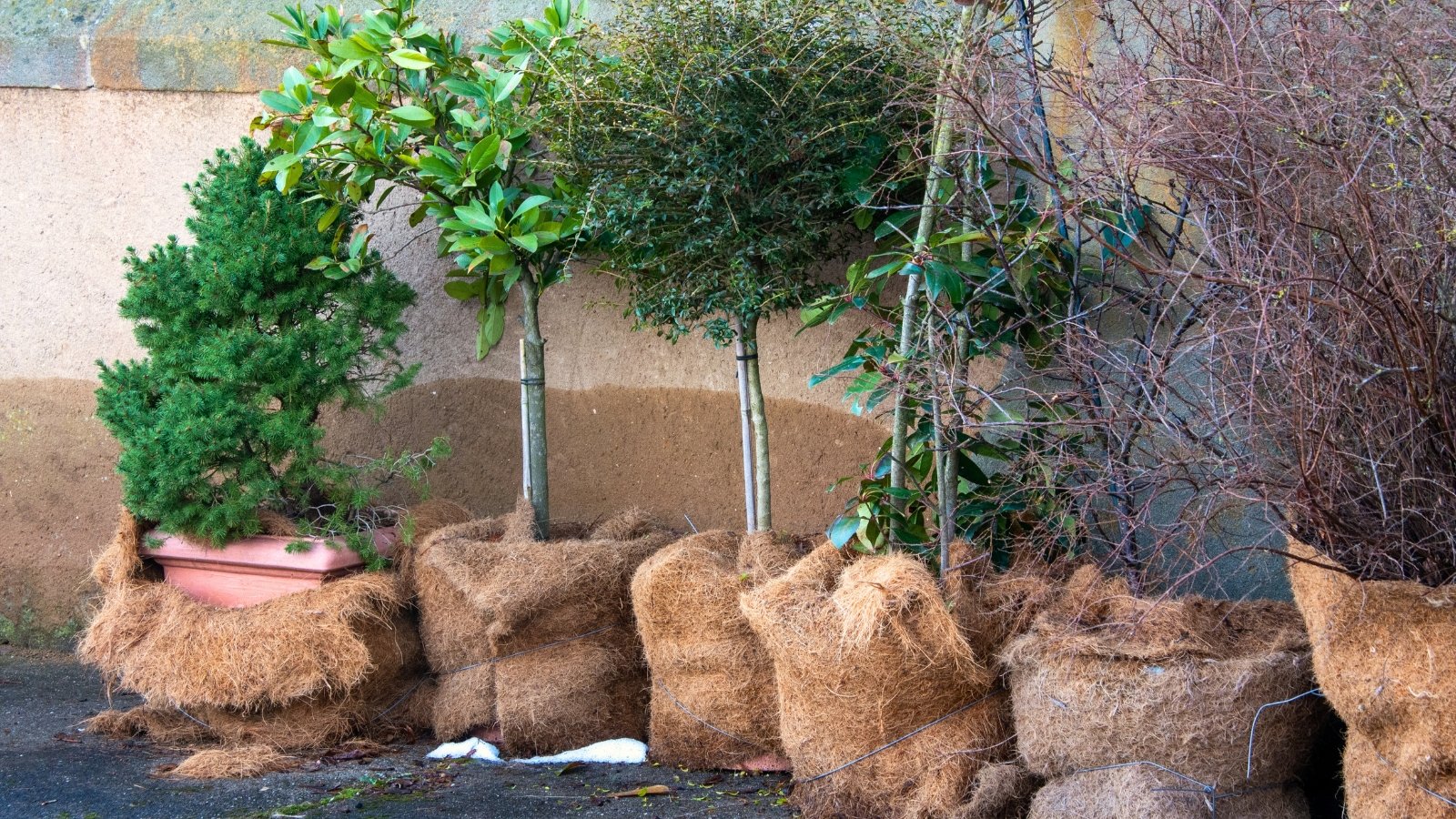 Burlap wrapped around pots keeps roots cozy and warm.
Burlap wrapped around pots keeps roots cozy and warm.Many of us gardeners use containers to expand our garden beds. If you have lingering crops in pots, you’ll want to protect them from the oncoming chill of winter. Use row cover for multiple pots; drape it over them, and tuck the ends in underneath the pots.
If your yard has a well-lit area with a covering, set the plants in that space. The roof protects potted plants from excess rain, cold temperatures, and frosty drafts.
Further insulate the containers with burlap. Wrap it around the bottom portion where the roots are, and secure it in place with twine. Or, use an old blanket! Repurposed items like carpets and old clothes are other good substitutes.
Always Cover the Soil
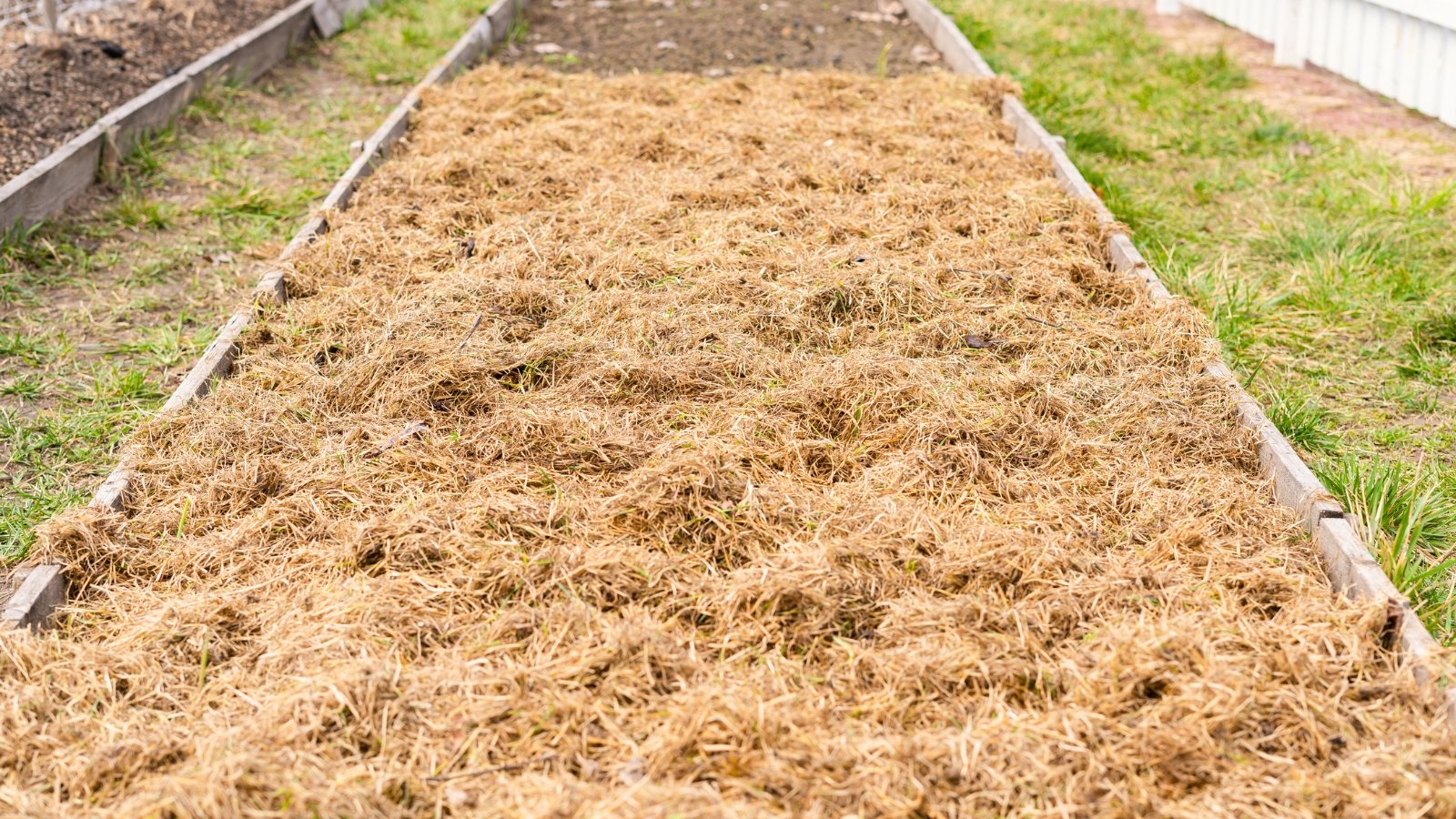 Mulch keeps roots cozy and soil full of nutrients.
Mulch keeps roots cozy and soil full of nutrients.The best way to prepare garden beds for winter is by covering them with mulch. Mulch blankets the surface, keeping microbes and soil organisms safe from frosty weather. It insulates plant roots, and it encourages organic matter to decompose in the soil.
The best mulch for vegetable plots is compost or a similar nutrient-rich amendment. Straw, leaf mold, and chopped leaves are other possible substitutes. Use wood chips or bark nuggets near woody perennials, like trees and shrubs.
Blanket the soil with a layer of mulch two to three inches thick. Be careful not to smother perennial crowns that may rot, and leave a gap between plant stems and the mulch. Reapply mulch in spring to prepare the garden for the growing season.
Key Takeaways
- If you choose not to cover, still be sure to prepare garden beds for the winter. Remove weeds, add mulch, and lay the garden to rest.
- Frost cloth, cloches, and greenhouse plastic are perfect materials for insulating cold perennials on frosty nights.
- Alongside your garden plots, insulate containers and planters with frost-tender plants inside.


 2 days ago
4
2 days ago
4
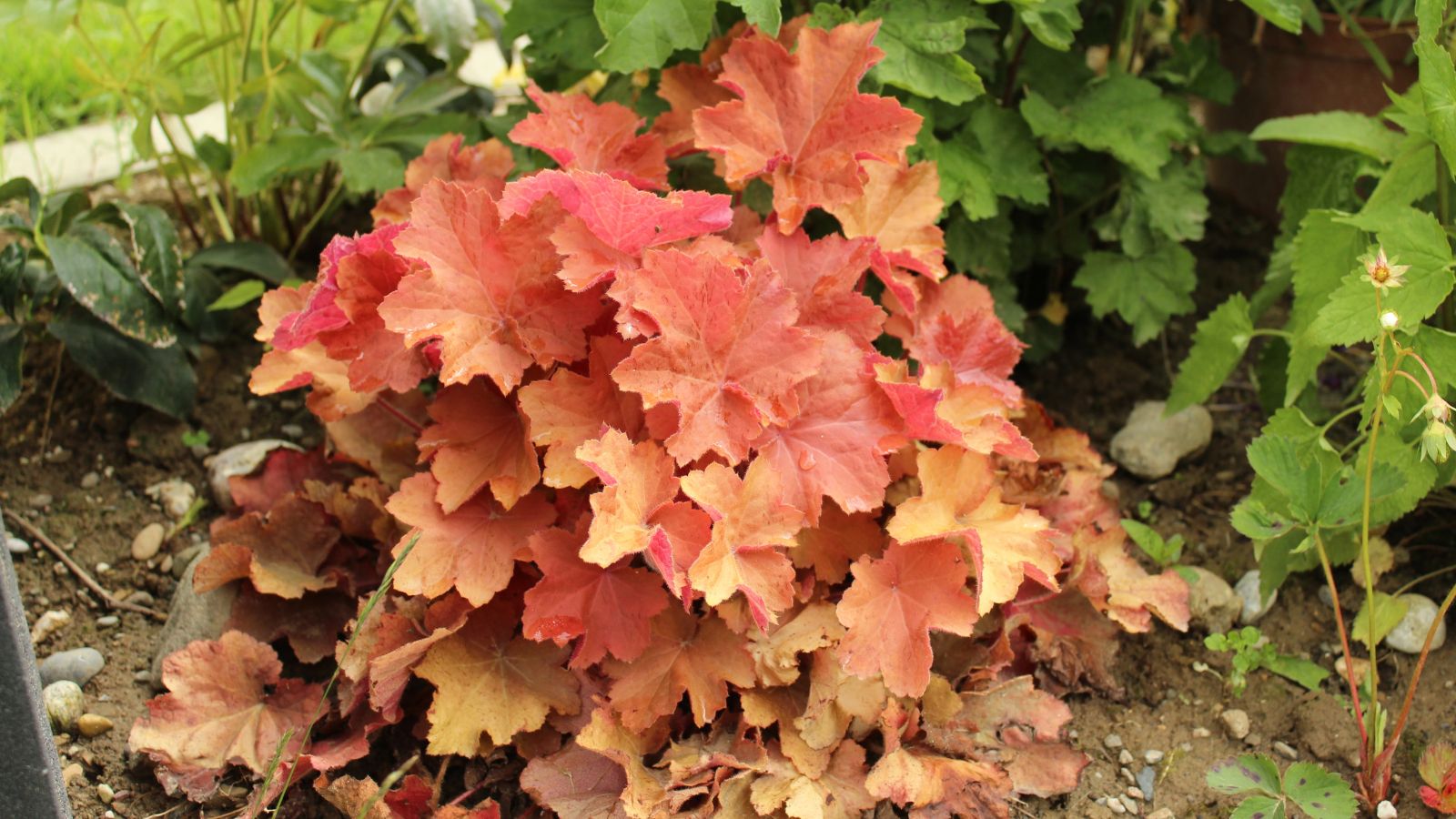
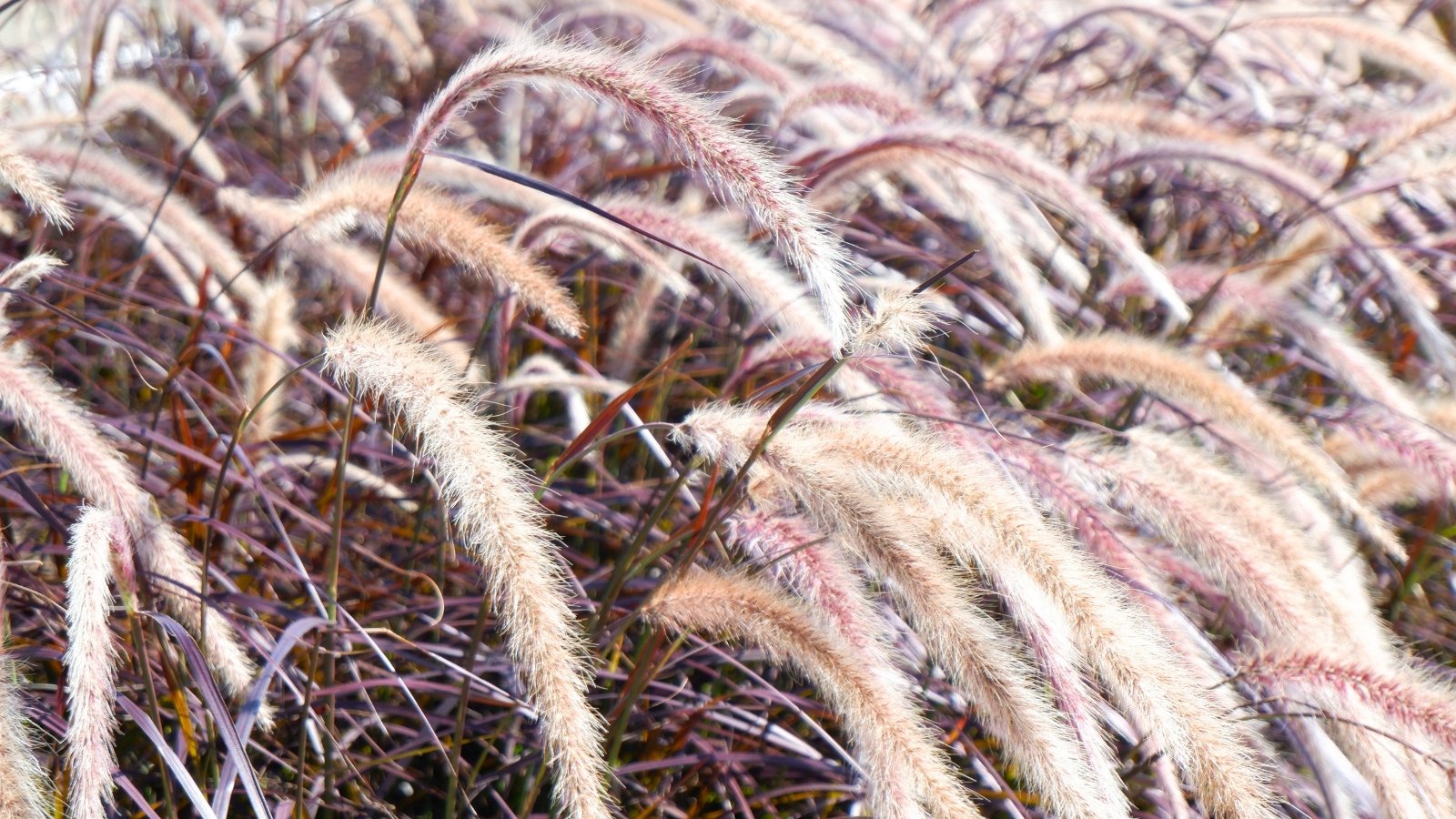

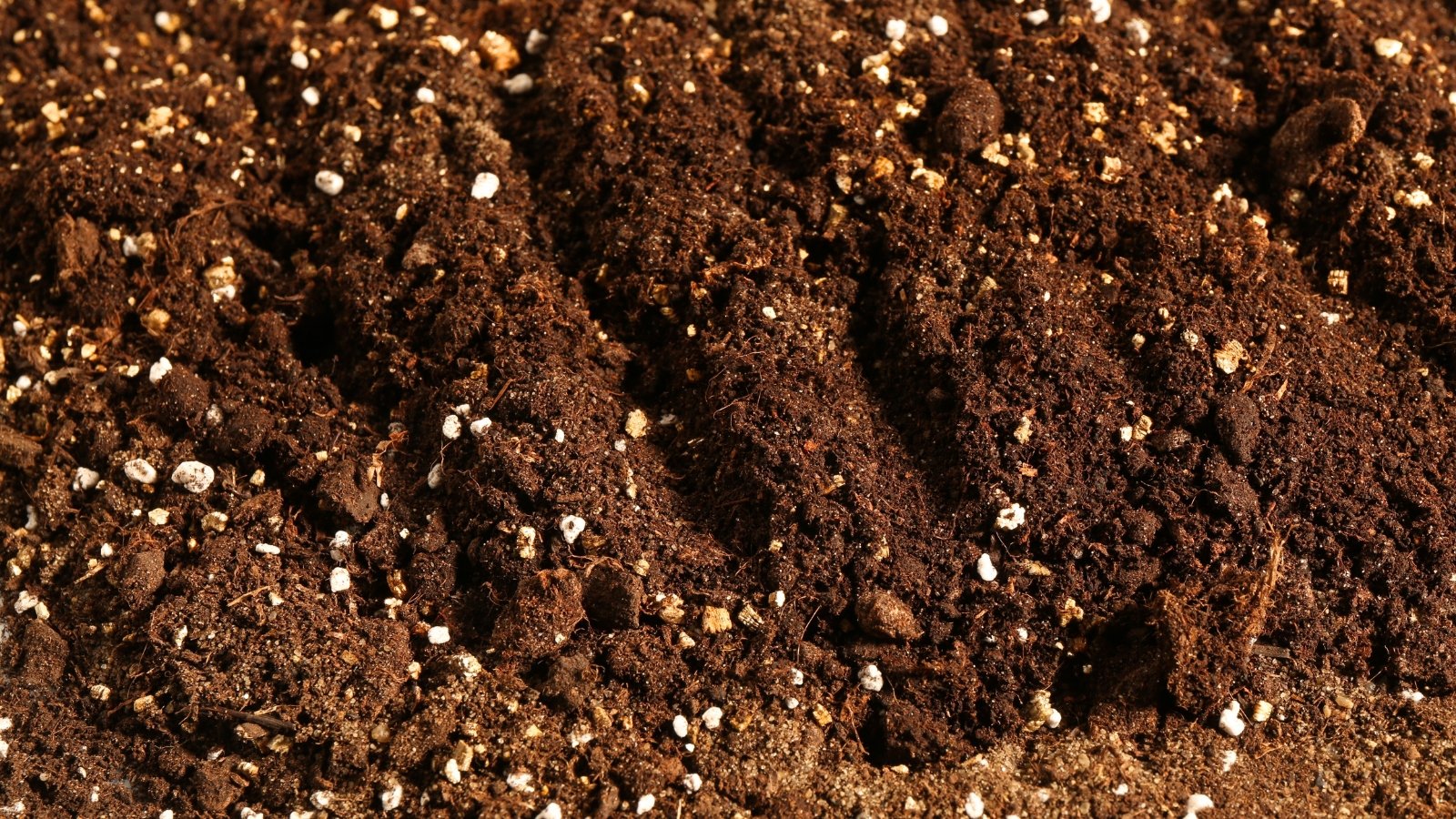
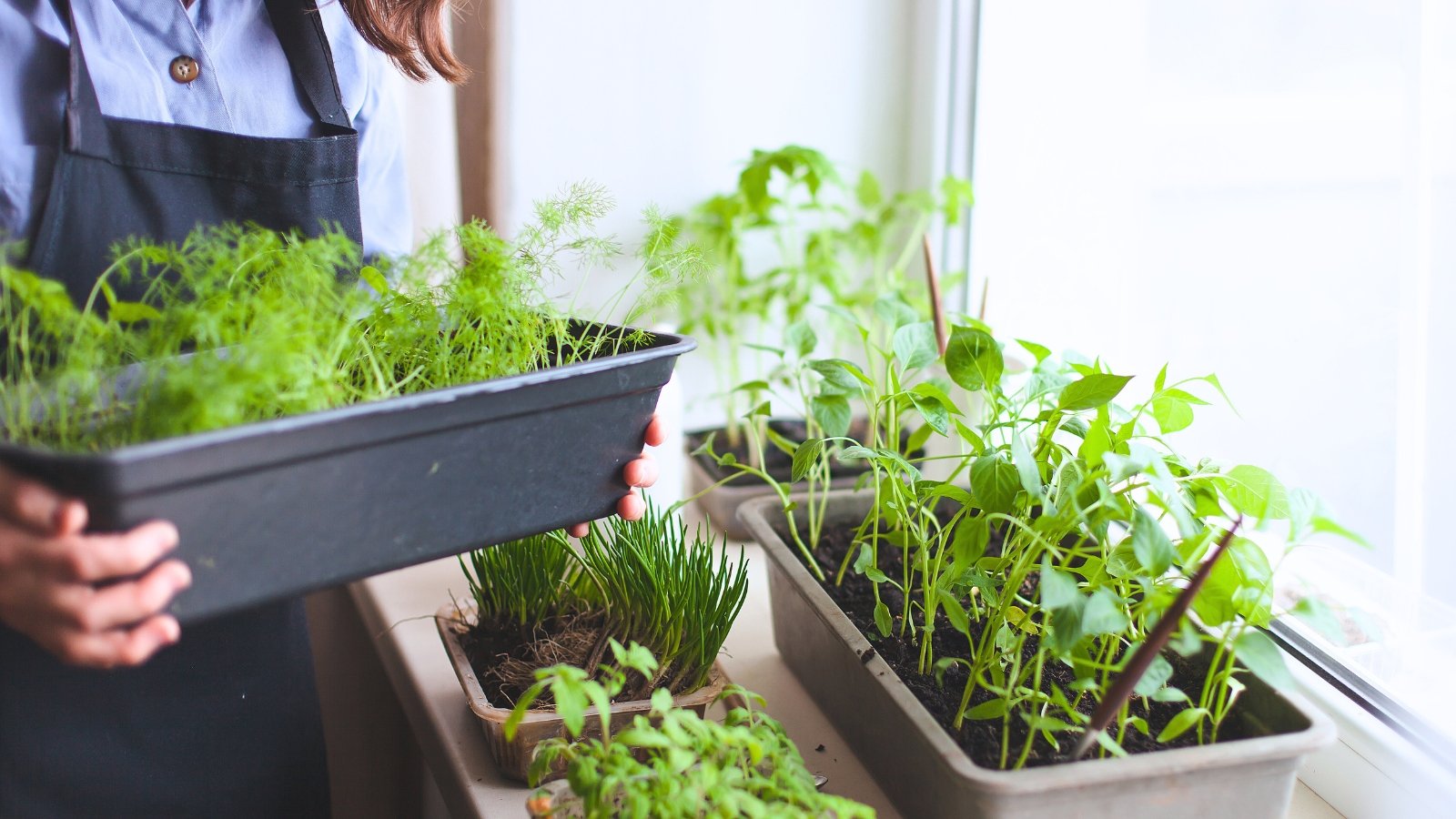
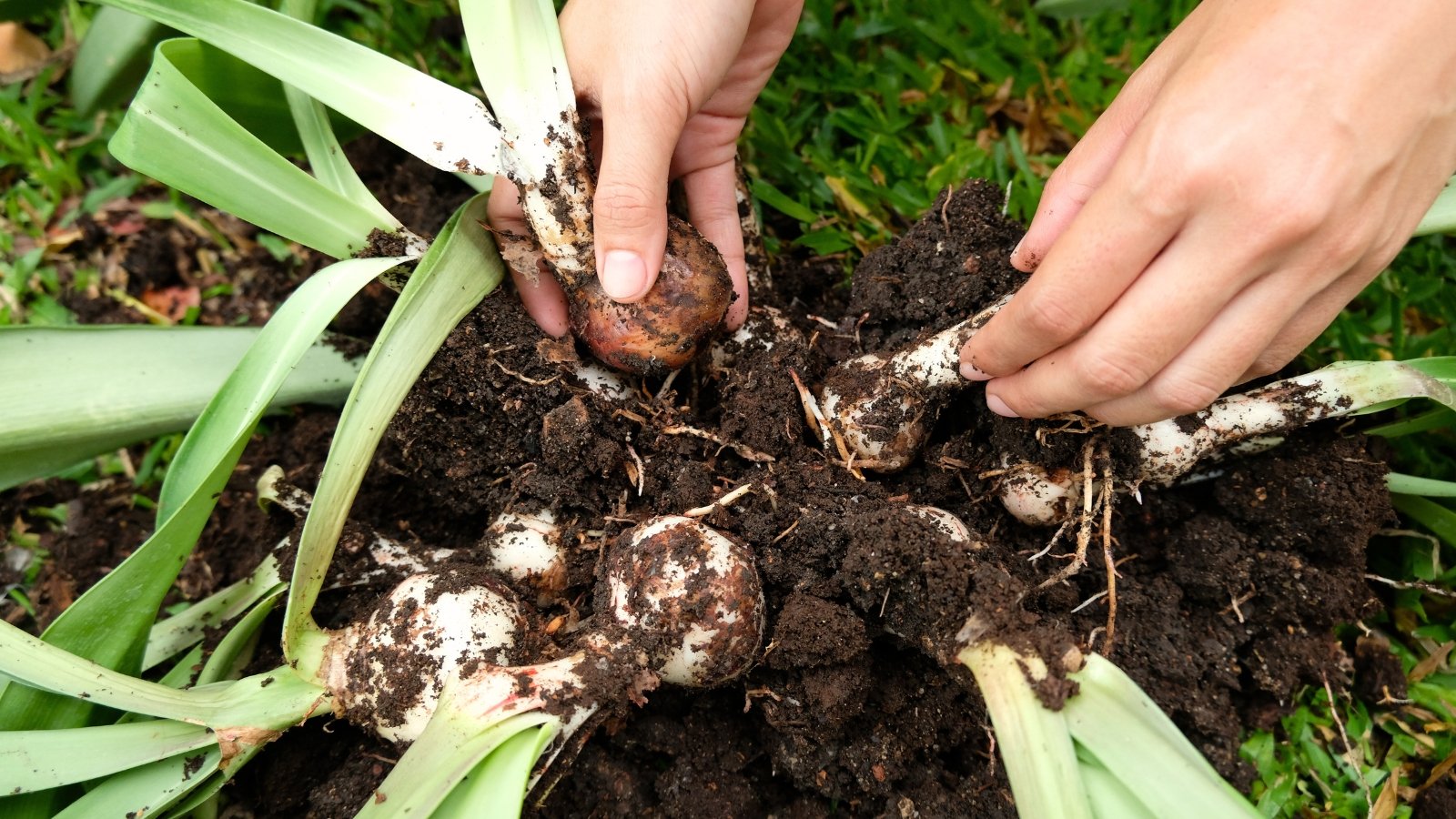















 English (US) ·
English (US) ·  French (CA) ·
French (CA) ·